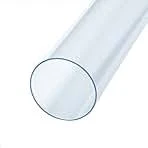Dec . 03, 2024 21:23 Back to list
Understanding Plumbing Pipes and Fittings for Efficient Home Water Systems
Understanding Plumbing Pipes and Fittings A Comprehensive Guide
Plumbing is an essential aspect of any building, whether residential or commercial. It is the system that provides clean water for drinking, cooking, and sanitation while also handling the disposal of wastewater. At the heart of plumbing systems are pipes and fittings, which play a crucial role in connecting different parts of this complex network. Understanding the types, materials, and appropriate uses of plumbing pipes and fittings is vital for anyone interested in maintaining or renovating their plumbing systems.
Types of Plumbing Pipes
1. PVC Pipes (Polyvinyl Chloride) PVC pipes are among the most commonly used due to their affordability, resistance to corrosion, and ease of installation. These pipes are typically white and are used for drainage, waste, and vent (DWV) systems. They are not suitable for hot water applications, but for most plumbing needs, they are highly effective.
2. CPVC Pipes (Chlorinated Polyvinyl Chloride) Similar to PVC, CPVC is treated to withstand higher temperatures. This makes it suitable for both hot and cold water supply lines. CPVC pipes are typically beige in color and offer the same corrosion resistance and lightweight benefits as PVC.
3. PEX Pipes (Cross-Linked Polyethylene) PEX is a flexible, resilient pipe that has gained popularity in recent years. It can be easily bent and shaped, allowing for fewer fittings and cuts during installation. PEX is suitable for both hot and cold water applications and is resistant to scale and chlorine. However, it is important to note that PEX should not be exposed to sunlight for extended periods.
4. Copper Pipes Known for their durability and longevity, copper pipes have been used for decades in plumbing. They are resistant to corrosion and can carry hot water without degrading. Copper is available in Type K (thick walls), Type L (medium walls), and Type M (thin walls), with Type L being the most common for residential use. However, copper pipes can be expensive and require soldering for connections.
5. Galvanized Steel Pipes These pipes were once common in homes, especially for water supply lines. They are coated with zinc to prevent rusting, but over time the zinc can wear off, leading to corrosion. Nowadays, many homeowners opt for more modern materials due to the potential for rust and the heavier weight of galvanized pipes.
Plumbing Fittings
plumbing pipes and fittings

Pipes alone cannot function without fittings. Fittings are the components used to connect different parts of the plumbing system, allowing for changes in direction, size, and flow of the water. Here are some basic types of plumbing fittings
1. Elbows Elbow fittings are used to change the direction of the piping, typically at a 90-degree or 45-degree angle. They help in routing pipes around obstacles.
2. Tees These fittings are shaped like the letter T and are used to enable branching in two directions, splitting the flow of water between multiple lines.
3. Couplings Couplings are used to connect two lengths of pipe together. They can be male or female, depending on the type of pipe end they connect.
4. Unions Similar to couplings, unions provide a connection but allow for easy disassembly without cutting the pipe, making them useful for maintenance.
5. Caps and Plugs Caps and plugs are used to seal the ends of pipes. Caps are used to cover pipe ends, while plugs are inserted into the pipe to stop the flow.
6. Adapters These fittings allow two different types of pipes to connect, ensuring a proper fit across varying materials.
Conclusion
Choosing the right plumbing pipes and fittings is crucial for the longevity and efficiency of any plumbing system. Whether you are a homeowner embarking on a DIY project or a professional plumber, understanding the various options available can help you make informed decisions and avoid costly mistakes. Each type of pipe and fitting has its benefits and specific applications, so knowing when and how to use them is key. With the right knowledge and a commitment to quality, maintaining an effective plumbing system becomes manageable and even satisfying.
-
High-Quality PPR Pipes and Fittings Durable ERA PPR & PVC PPR Solutions
NewsJul.08,2025
-
Black HDPE Cutting Board - Durable, Non-Porous & Food Safe HDPE Plastic Cutting Board
NewsJul.08,2025
-
High-Quality CPVC Panel Durable HDPE & PVC Panels Supplier
NewsJul.08,2025
-
Double PE Welding Rod Supplier - High Strength, Durable & Versatile Welding Solutions
NewsJul.07,2025
-
High-Quality PVC-O Pipe Supplier Durable 75mm PVC Pipe & Connections Leading PVC Pipe Company
NewsJul.07,2025
-
HDPE Drainage Pipe Supplier – Durable & Corrosion-Resistant Solutions
NewsJul.06,2025

